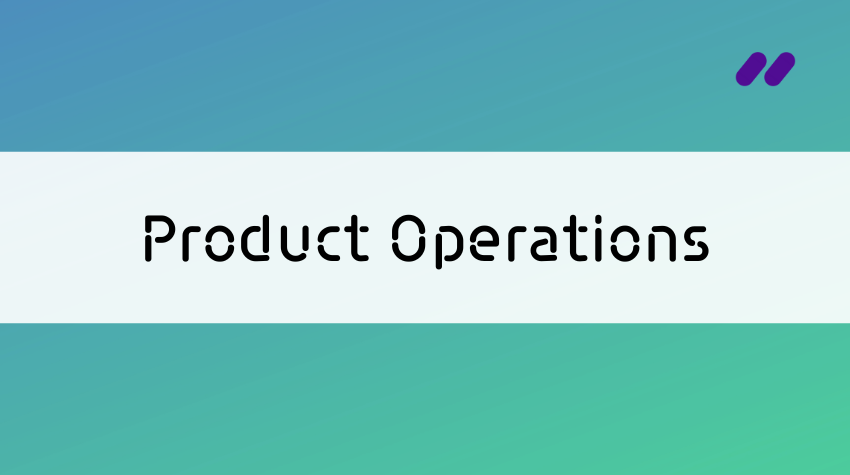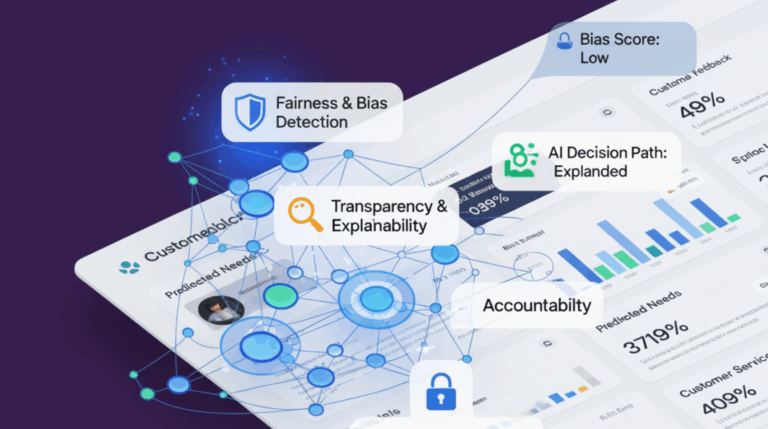Over the last couple years, the influence of the product team has grown stronger as businesses depend more and more on product-led growth. Also known as PLG, this strategy positions the product as the main revenue driver instead of marketing and sales. PLG is closely tied to the product and the needs of customers, making it a reliable and measurable strategy for growth.
With the focus on PLG, how businesses manage customer insights is more important than ever. In particular, product teams are now tasked with understanding customer feedback in order to facilitate executive decision making.
As a result, new layers are stratifying the product team. Many companies now have a product operations team to enable the organization to align with customer feedback and make more efficient and data-driven decisions.
But as the product team scales in response to the demands of PLG, many professionals working in product operations feel that they are not equipped to handle these evolving responsibilities. How can these professionals take charge of the narrative to contribute more effectively and validate the impact of their role at the organization?
Executive leaders are looking to product teams for answers
Product teams are no longer seen as just an IT function but play an evolving role in driving business strategy. Nowhere is this change better seen than in the C-suite, where 30% of Fortune 1000 companies now have a Chief Product Officer (CPO), marking a 10x increase from 2021.
Execs today are looking to product leaders to understand customer and market insights and make business decisions. CPOs often own the voice of the customer and even make priority decisions 40% of the time, a level similar to the CEO at 38%.
Under the leadership of the CPO and the proliferation of product-led growth, many organizations have recognized the value of operational efficiency. As a result, product operations has emerged as a vital new function. While it may be hard to define today in its early stages, most experts agree that its main purpose is to enable efficiency across the product team.
Product will continue to impact business decisions. Experts predict that product teams will become accountable for revenue and 70% of CPOs will gain ownership of P&L over the next 5 years. Some even go so far as to say product will be the new sales and, well, we’ll just have to see about that.
Responding to the challenges in product operations
Product ops professionals will already know that their role sits at the intersection of product, customer success, sales, revenue, and so forth. However, the boundaries of what defines product ops are fuzzy, so these relationships with other functions at the organization are constantly shifting.
The added difficulty today is that execs are placing higher expectations on product’s overall contribution to revenue. Product ops bears the brunt of this demand as the enablement branch of the product organization.
It may not be so surprising that technology plays a significant role in responding to these challenges, but one type of platform emerges today as a real game changer: text analytics.
Let’s take a look at the main responsibility areas in which product ops teams are measured today, the challenges associated with them, and how text analytics platforms can solve these pain points.
1. Feedback
Product ops teams collect and consolidate customer feedback, user interviews, and market research, then extract and organize insights for decision making.
What remains a challenge is unifying feedback and insights in one centralized platform. This is where text analytics platforms step in.
With a single source of truth, along with the ability to deep dive into aggregated or individual feedback channels, product ops teams are able to better understand the voice of the customer and make data-driven decisions.
2. Prioritization
Not only do product ops teams need to analyze unstructured customer feedback data, but they need to do it in a way that enables decision making.
That’s because product ops teams are responsible for aligning the organization with customer feedback insights. Today, 40% of companies report that customer needs and wants are the top factor driving prioritization in the product roadmap. So when it comes to executive decision making, product ops has a huge part to play.
The current challenge is how to know precisely which customer needs and wants to focus on – that is, the ones that would have the most impact on overall customer satisfaction.
Text analytics platforms like Keatext actually measure key drivers of customer satisfaction and provide recommendations to prioritize the most impactful changes that could be made. Relying on AI, these recommendations are specifically tailored to the business context identified from the feedback.
3. Tool management
Product ops teams standardize tools used by the product team, consolidate technologies when possible, select new tools when needed, and manage their own budget without bureaucratic oversight that slows innovation.
At the same time, product ops teams need technology that is designed to streamline their own operations. The activities that companies report as the most challenging to track are building out the product roadmap (41%) and collecting customer feedback (24%).
Both of these activities are not only supported but measured by text analytics platforms, and this is a really impactful difference. Text analytics platforms have the added benefit of being able to consolidate customer feedback platforms.
Making the future of product a reality
Technology can improve relationships and build trust between product ops and other teams by enabling stronger, data-driven decision making that benefits the entire organization and ultimately, customers.
When looking for a technology solution that can improve product operations, look no further than a text analytics platform. Ultimately, technology can help product ops contribute in more meaningful (and measurable) ways to the organization, providing clear and achievable objectives that rely on data—a core element of the product ops mission.
Product ops professionals need to be responsive to changing expectations and the current challenges that they are facing. As the role evolves, technology that can enable professionals to do their job better improves outcomes for the product organization, the business, and ultimately customers.
Technology will bridge the gap between the present and the future of product ops by helping to better define the boundaries and show the value of this new and evolving role.






